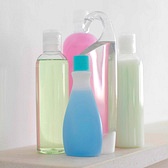3 Creative Ways to Kill the Need for Single-Use Plastic Bottles
We’re always on the lookout for creative ways to reduce kill the use of plastic in innovative ways. We’ve found 3 examples we just have to share – an event, a city and a school:
At the Montréal Jazz Fesitival, the organization invited Fontaine Naya a water-bottle refilling service from Quebec-based Naya Waters designed to minimize plastic waste. For an affordable price (CAN$1.50) event patrons could simply refill their water bottles and stay hydrated while doing good for the planet. Public, outdoor events are huge consumers of plastic water bottles, this jazz festival has been carbon-neutral 2008 but this past summer they focused on water and reducing plastic consumption and trash. Their success, we hope, will inspire other event organizers to consider a water refilling stations to keep their crowds healthy and hydrated.
TapIt is a community program that enables people to refill their water bottles at participating cafés, completely free of charge in, and around, New York City (and now San Francisco and Washington, DC!). For the water-totting crowds in this city, the goal of this program is to help people stay healthy and hydrated without relying on single-use plastic bottles. And it’s so easy – restaurant or café with a soda dispenser or tap that gives clean drinking water can sign up as a partner. Thirsty consumers can find taps online or via TapIt’s iPhone app, and are provided with information on the type of water that’s available, telling discerning customers whether the water’s filtered or non-filtered, room temperature or chilled. How great is that?
In Wolfeboro, New Hampshire, the Kingswood Regional High School and Middle School a recently rebuilt middle and high school go beyond LEED certification, and for the coveted CHPS certification. Aside from new synthetic and natural turf athletic fields as well as a Geothermal Ground Heat Exchanger piping system to serve the entire campus, the new school takes advantage of natural light, LED lighting when needed, energy sensors and other energy-saving efforts. But what really stood out to us? They have been smart enough to include reusable water bottle refilling stations right by the traditional water fountains on campus. Through their efforts, they are teaching the next generation the importance, the beauty, and the need to be green in our personal and public environments.
We’re so impressed that people, communities, events and even whole cities are finding ways to encourage people to stop using single-use plastic
bottles and reuse environmentally-friendly water bottles. Now you’ve got access to water, and we’ve built the only reusable glass water bottle made from a minimum of 75% post-consumer recycled glass and ZERO plastic.
Share with us, what do you do to minimize your use of single-use plastics?
3 Creative Ways to Kill the Need for Single-Use Plastic Bottles Read More »
